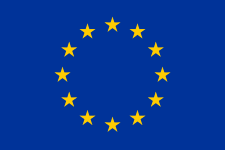This report contributes to the IMPROVER project by providing information on the use of traditional and social media by relevant stakeholders to increase the resilience of critical infrastructures. It builds on the results of IMPROVER project D4.1 to explore the communication practices adopted by emergency managers and blue light organisations (e.g. police, fire and rescue services) to reduce uncertainty and panic amongst disaster-affected populations at each stage of an incident (see section 5 – mitigation, preparedness, response, recovery). The potential use of traditional media and social media to share and spread information is examined with a view to identifying the key components of effective crisis communication for critical infrastructure operators during such incidents. The identification of effective communication tactics is a necessary corollary for building resilience not only within critical infrastructure operators, but also amongst those communities who rely on their services every day.
This report begins by providing an overview of the key themes in the literature on traditional media, crisis communication, and disaster resilience. It considers the extent to which the connective affordances of social media sites such as Facebook can be leveraged by emergency managers in order to crowdsource crisis information; as well as the ethical challenges posed by such practices. Then, it presents key findings from the thematic analysis of 31 interviews conducted with key stakeholders (including emergency managers, representatives of critical infrastructure operators, community leaders and professional journalists) between November 2016 and January 2017. In addition, the report draws on lessons learnt from two recent incidents in which traditional media and social media were said to have contributed to disaster resilience within countries represented in the project consortium.
 This project has received funding from the European Union’s Horizon 2020 research and innovation programme under grant agreement no. 653390
This project has received funding from the European Union’s Horizon 2020 research and innovation programme under grant agreement no. 653390
Pingback: Social media's not all bad – it's saving lives in disaster zones - Finance Crypto Community()
Pingback: Social media’s not all bad – it’s saving lives in disaster zones | Iranians Global Network()